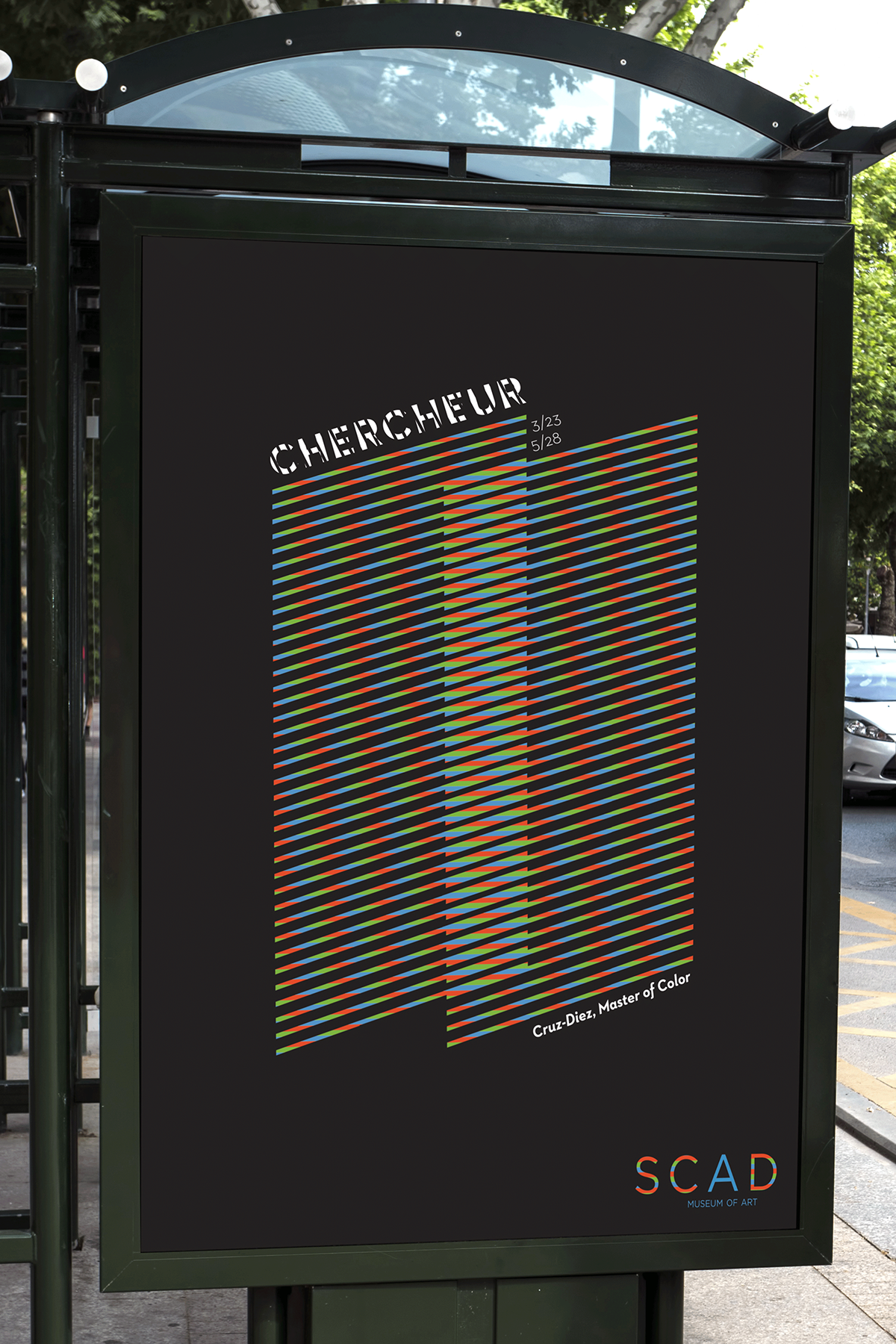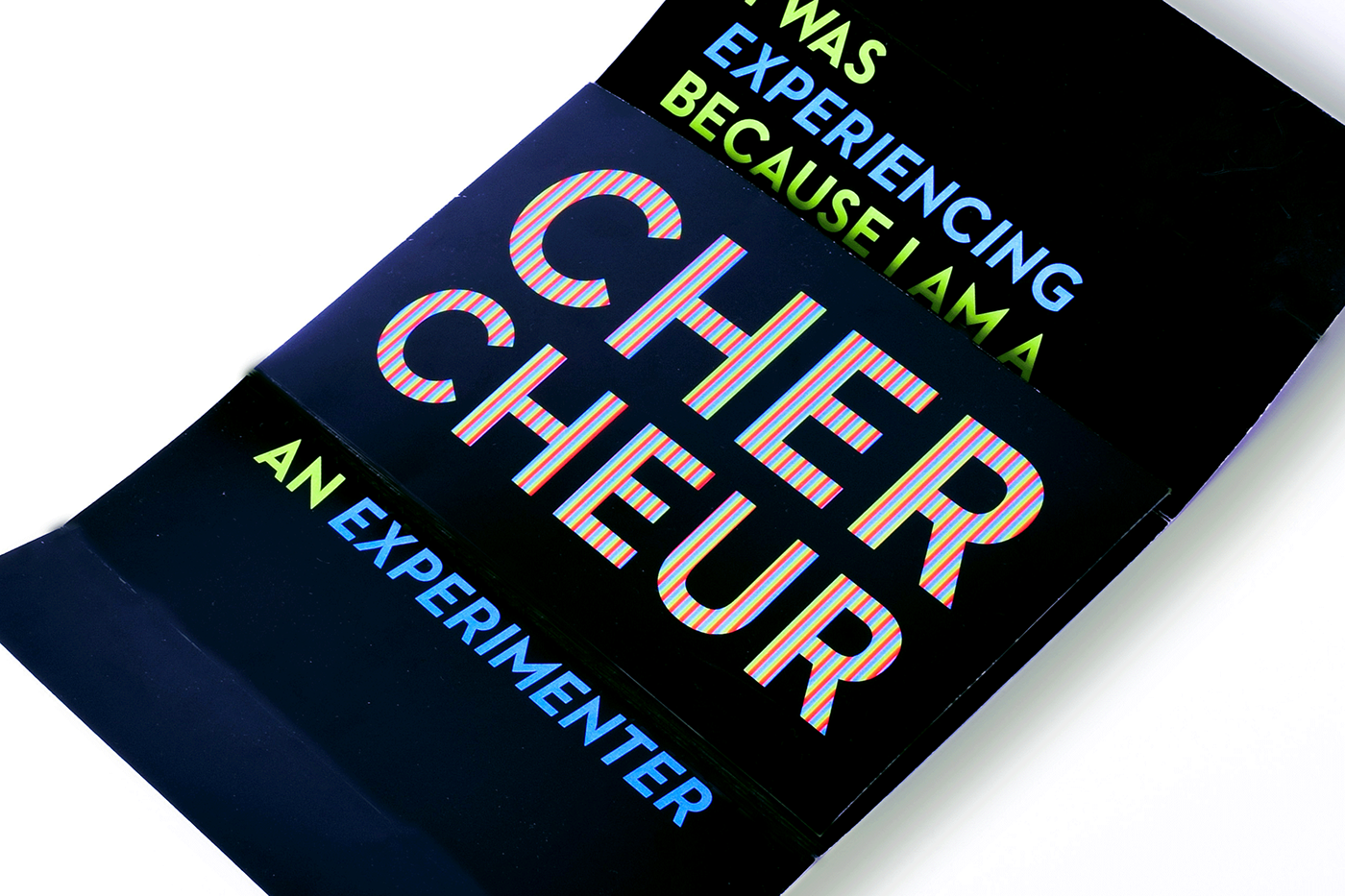This project is for any topic for a museum exhibition by creating an Identity System, Environmental / Exhibition Graphics, Narrative Literature, and Packaging. Finally, developing one unified piece by concentrating on in depth research, analysis, concept ideation, design exploration, and development.
The topic for my museum exhibition is based on the Franco-Venezuelan artist, Carlos Cruz-Diez. One of the great figures of kinetic-optic art as a contemporary theorist of color whose artistic proposal is based on four chromatic conditions: subtractive, additive, inductive, and reflected condition. His research has brought art a new way of understanding the phenomenon of color, greatly expanding its perceptual universe.
Exposing the viewer of color as it appears and disappears in the course of the dialogue that is generated in real time and space. As humans through a "basic vision" devoted of predetermined meaning, we are able to awaken other sensitive apprehension mechanisms that are more subtle and complex. It unquestionably appears that the acquired information as well as the knowledge stored in the course of our living experience probably isn't true, at least partially.

The identity for this exhibit was created based on Cruz-Diez’s theory about understanding color as space instead of form to help realize what the viewer was actually observing with the colors presented in this manner. Chercheur is in the typeface Nuertaface for its strong bold linear structure much like Cruz-Diez’s optical artwork. The letterforms themselves are separated in various diagonals to remind the viewer about looking at the space in the letterforms instead of the form itself to allow how the eye to interact with the illusion created. Since the eye is always in movement it gives the effect of seeing something not there. The typeface is also a contemporary style of sans serif which connects to the contemporary vision Cruz-Diez is relieving to his viewers a new understanding of color effecting the eye.



The exhibit was created based on Cruz-Diez's theory about understanding color as space instead of form to help realize what the viewer was actually observing with the colors presented in this manner. The letterforms this time are cut out in the diagonal pattern to let the other colors appear and create that optical illusion. Creating mutiple colors with the different displacements of the black bars. Giving the illusion of seeing more colors than what are physically presented.



Since the goal of Cruz-Diez’s work is mostly to find a way the viewer can interact with the artwork.The information is related to six different studies of color he has revolutionized: Physcichromie, Chromatic Addition, Chromatic Induction, Chromo Interference, Chromo Saturation and Transchromie. I based the layout off the three color bar illusion he creates by placed a darker color on top of the orange, blue, and green.
There is something very powerful about creating an optical illusion of thousands of colors with only three different colors. Cruz-Diez was trying to achieve a connection for viewers to understand this theory of color he was developing. Placing him self in the situation where he had to explore through experiments. The packaging design was based off of understanding this perceptual world through the phenomenon of color and how Cruz-Diez saw himself as an experimenter of color.
For the packaging the three color bar illusion is used to wrap the outside of the box to attract the eye of the viewer. Cruz-Diez not only wanted his viewer to interact with the artwork but to experience it themselves through experiments. Inside will include a small mole skin sketch book with four color pencils. On the back of the cover includes a type treatment of a description of chromatic conditioning that effects all of us around it.












